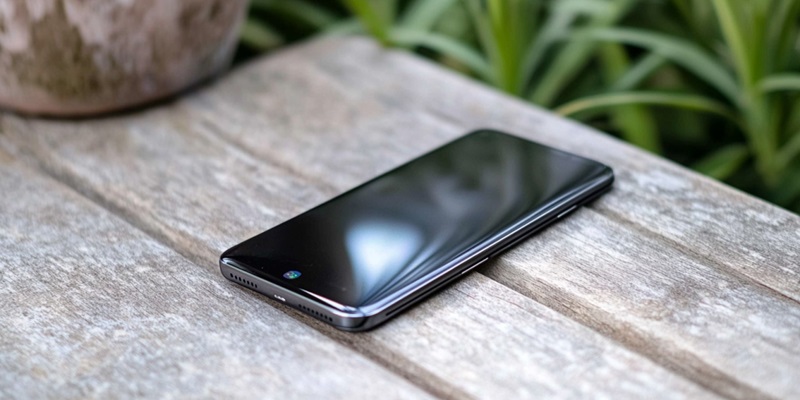Samsung has officially launched the Galaxy F05, a mid-range smartphone exclusively for the Indian market. Despite being marketed as a new device, keen observers will note that it is essentially a rebranded version of the Galaxy A05, offering minimal changes beyond its exterior design. The device aims to attract budget-conscious consumers looking for a stylish yet affordable smartphone option. However, it’s essential to dig deeper into the features and specifications that this device brings to the table, and how it fits into Samsung’s broader strategy for capturing different market segments.
Key Specifications and Features
Performance and Battery Life
The Samsung Galaxy F05 is powered by the MediaTek Helio G85 chipset, a dependable SoC that provides adequate performance for everyday tasks and modest gaming. Accompanied by 4 GB of RAM and 64 GB of internal storage, which is expandable via a microSD card, the device offers suitable memory for storing apps, media, and other data. The phone’s 5,000 mAh battery ensures that it can last through a full day of moderate use, while 25 W wired charging capabilities mean that users won’t have to wait too long to recharge. Although the Helio G85 might not compete with higher-end processors, it is a reliable choice for mid-range devices.
This chipset supports various connectivity options, including dual 4G VoLTE, Wi-Fi, and Bluetooth 5.0, offering robust connectivity solutions for the majority of users. The device’s long battery life is a significant selling point, particularly for consumers in markets where access to power outlets may be limited during the day.
Display and Camera Setup
The Galaxy F05 comes with a 6.7-inch IPS display, featuring a 720p resolution and a 60 Hz refresh rate. While these specifications are not groundbreaking, they provide a reasonable viewing experience for casual users who are not particularly focused on high-definition content or high refresh rates. The screen size is generous and should serve well for media consumption, social media scrolling, and other everyday uses.
On the camera front, the Galaxy F05 features a 50 MP primary camera, which is a standout feature in this segment. Complementing the primary sensor are an 8 MP front-facing camera for selfies and a 2 MP depth camera. This combination ensures that users can capture quality photos in a variety of settings, although the depth camera’s utility may be limited to specific scenarios. This camera setup will likely appeal to young consumers who prioritize photography capabilities in their smartphones.
Aesthetic and Design Elements
Exterior Design
One of the most talked-about features of the Galaxy F05 is its "stylish" leather design, aimed at providing an upscale feel to a budget smartphone. The back panel’s leather-like finish not only adds a premium touch but also aids in better grip. Although the design may not appeal to everyone, it sets the Galaxy F05 apart from other mid-range devices which often feature plastic or glossy finishes.
This design philosophy underscores Samsung’s attempt to inject a sense of luxury into its more affordable offerings. It’s a strategy that pays off by appealing to a demographic that wants a chic-looking device without a hefty price tag. The leather finish is not a radical innovation but serves as an effective way to differentiate the product in a crowded marketplace.
Practical Hardware Inclusions
The Galaxy F05 also includes practical hardware additions such as a 3.5 mm audio jack, USB Type-C port, and FM radio. These features, while considered dated by some, remain crucial for many users. The inclusion of a 3.5 mm audio jack, in particular, will be appreciated by consumers who still rely on wired headphones. The FM radio feature may not be a showstopper, but it certainly adds value for users who enjoy local radio stations.
Another noteworthy feature is the dual SIM capability, which is an essential requirement for many users in India. This offers flexibility for those who need to manage work and personal contacts on the same device. Overall, these practical inclusions make the Galaxy F05 a versatile device that meets the everyday needs of its target audience.
Market Strategy and Pricing
Pricing and Availability
The Galaxy F05 is priced at INR 7,999, approximately $95, making it an extremely affordable option within Samsung’s lineup. It will be available starting September 20, 2024, positioning it well for the upcoming holiday season. At this price point, the device competes directly with other budget offerings from brands like Xiaomi, Realme, and Motorola, all of which have strong footholds in the Indian market. Samsung’s pricing strategy aims to capture first-time smartphone buyers and those looking to upgrade from feature phones.
The brand’s extensive retail network and strong after-sales service in India provide additional incentives for consumers to opt for the Galaxy F05. Moreover, the device’s availability through both online and offline channels ensures wide accessibility.
Rebranding Strategy
Samsung has rolled out the Galaxy F05, a mid-range smartphone catered specifically to the Indian market. Although pitched as a brand-new device, savvy tech enthusiasts will recognize it as a revamped version of the Galaxy A05, with only minor tweaks primarily in its outward appearance. The Galaxy F05 targets budget-conscious consumers who desire a stylish yet affordable smartphone solution. This move is part of Samsung’s ongoing strategy to appeal to various market segments by offering a diverse array of products.
Focusing on the Galaxy F05’s features and specifications, the smartphone promises to deliver competent performance without breaking the bank. It’s equipped with a decent processor, sufficient RAM for everyday tasks, and a camera setup that can handle basic photography needs. Samsung has also invested in ensuring that the phone has a sleek, modern design, which is likely to attract younger buyers who prioritize aesthetics.
By strategically releasing such mid-range devices, Samsung hopes to dominate less saturated market segments. The Galaxy F05 not only ensures consumers get value for their money but also reinforces Samsung’s reputation for blending functionality with affordability.

